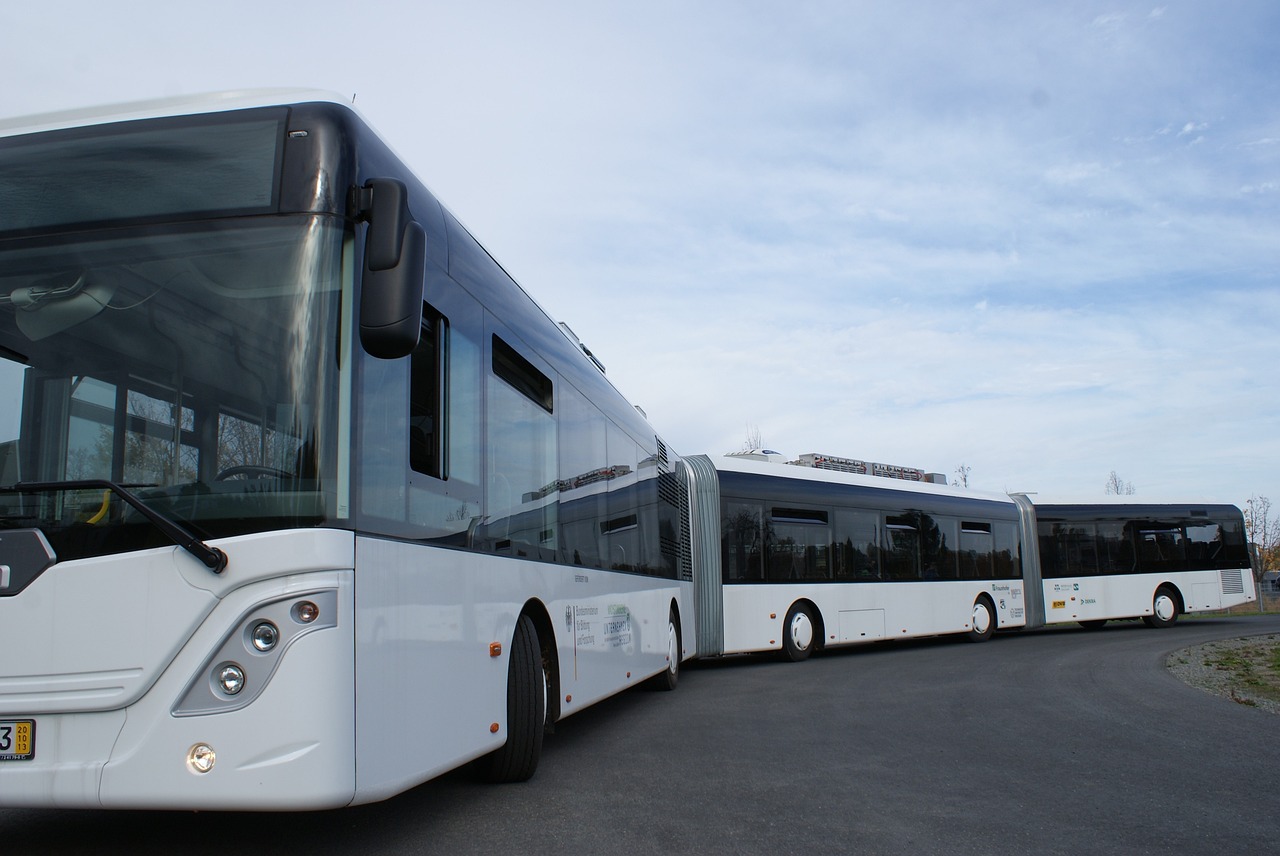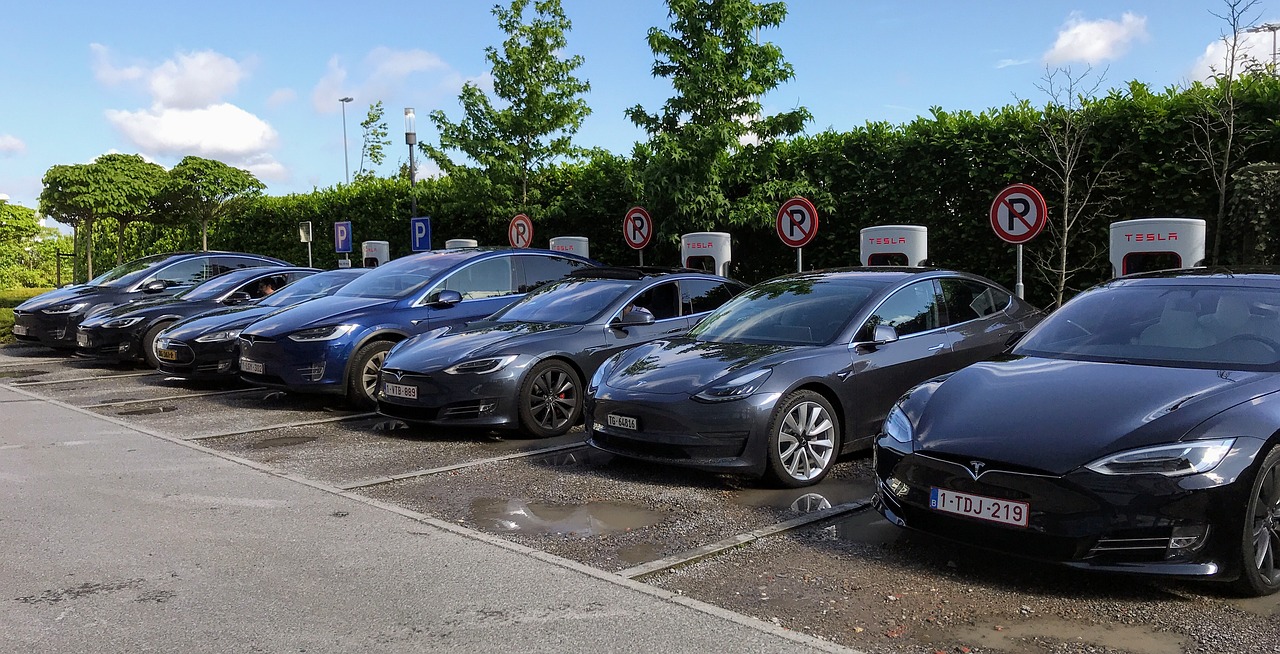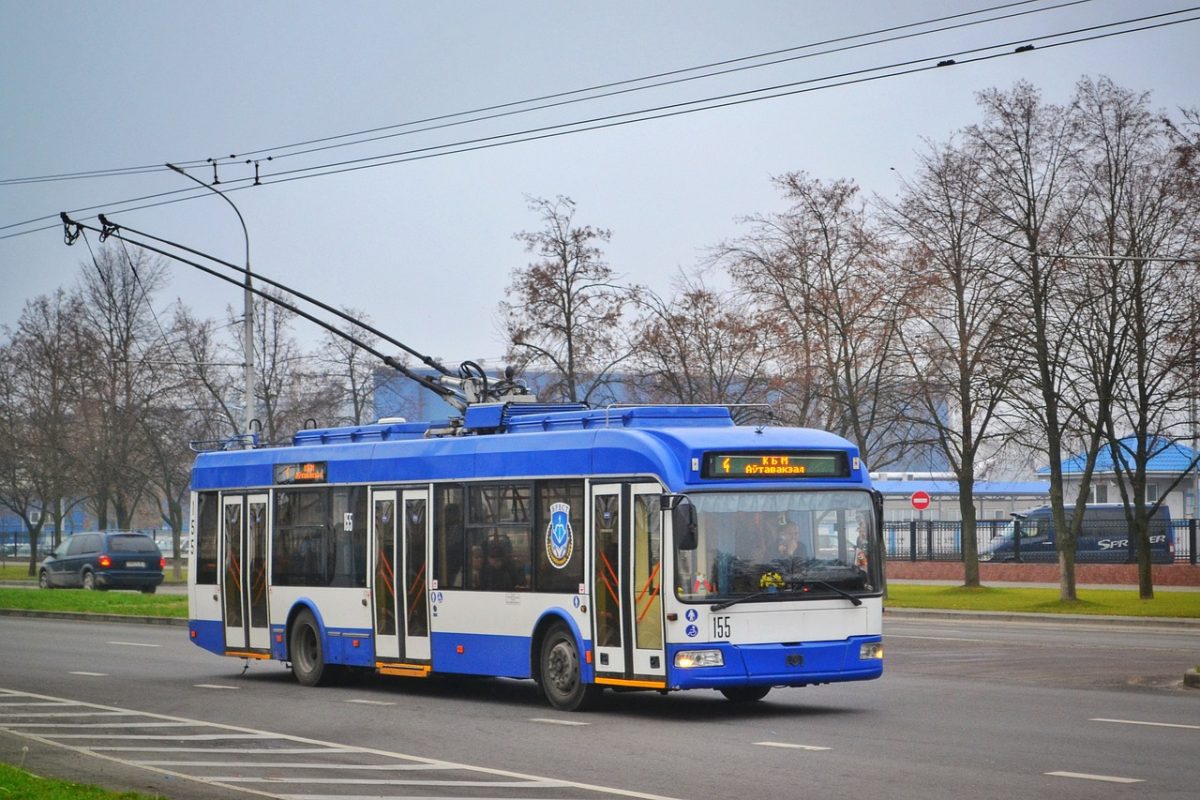
Latest NEWS
Revolutionizing Transportation: 5 Key Trends Unveiled at IT-Trans Karlsruhe 2024

IT-Trans Karlsruhe 2024: A Glimpse into the Future of Intelligent Transportation Systems (ITS)

The IT-Trans Karlsruhe will take place on 3 days from Tuesday, 14. May to Thursday, 16. May 2024 in Rheinstetten.
The IT-Trans Karlsruhe 2024 conference recently took place, showcasing the latest advancements in intelligent transportation systems (ITS). This event provided a glimpse into the future of transportation, highlighting five key trends that are set to revolutionize the way we travel.
Firstly, the conference emphasized the growing importance of connectivity in transportation. With the rise of smart cities and the Internet of Things (IoT), vehicles are becoming increasingly connected, allowing for seamless communication between different modes of transportation. This connectivity enables real-time data sharing, leading to improved traffic management, reduced congestion, and enhanced safety on the roads.
Another significant trend unveiled at IT-Trans Karlsruhe 2024 is the increasing adoption of electric vehicles (EVs). As the world moves towards a more sustainable future, EVs are becoming a popular choice for transportation. The conference showcased the latest advancements in EV technology, including longer battery life, faster charging capabilities, and improved infrastructure. With the continued development of EVs, we can expect to see a significant shift away from traditional combustion engines in the coming years.
Furthermore, the conference highlighted the emergence of autonomous vehicles (AVs) as a key trend in transportation. AVs have the potential to revolutionize the way we travel, offering increased safety, reduced traffic congestion, and improved efficiency. IT-Trans Karlsruhe 2024 showcased the latest advancements in AV technology, including advanced sensors, artificial intelligence, and machine learning algorithms. While there are still regulatory and ethical considerations to address, the future of AVs looks promising.
In addition to connectivity, EVs, and AVs, the conference also focused on the importance of multimodal transportation. With the rise of ride-sharing services and bike-sharing programs, people are increasingly relying on multiple modes of transportation to reach their destinations. IT-Trans Karlsruhe 2024 highlighted the need for seamless integration between different modes of transportation, allowing for efficient and convenient travel options. This integration can be achieved through the use of mobile applications, smart ticketing systems, and real-time information sharing.
Lastly, the conference emphasized the role of data analytics in transportation. With the abundance of data available, it is crucial to harness this information to improve transportation systems. IT-Trans Karlsruhe 2024 showcased the latest advancements in data analytics, including predictive modeling, real-time monitoring, and intelligent decision-making algorithms. By analyzing data, transportation authorities can make informed decisions, optimize routes, and improve overall efficiency.
In conclusion, IT-Trans Karlsruhe 2024 provided a glimpse into the future of intelligent transportation systems. The conference highlighted five key trends that are set to revolutionize transportation: connectivity, electric vehicles, autonomous vehicles, multimodal transportation, and data analytics. These trends offer exciting possibilities for the future, including improved traffic management, reduced congestion, increased safety, and enhanced efficiency. As technology continues to advance, we can expect to see these trends shape the way we travel in the years to come.

The Rise of Mobility as a Service (MaaS) and its Impact on Public Transport
The world of transportation is undergoing a significant transformation, and one of the key trends that has emerged is the rise of Mobility as a Service (MaaS). This concept, which was unveiled at the IT-Trans Karlsruhe 2024 conference, is set to revolutionize public transport and have a profound impact on the way people move around in cities.
MaaS is a concept that aims to integrate various modes of transportation, such as buses, trains, taxis, and even bike-sharing services, into a single platform. The idea is to provide users with a seamless and convenient experience, where they can plan, book, and pay for their entire journey using a single app. This means that instead of relying on multiple apps or physical tickets, users can have all their transportation needs met in one place.
The impact of MaaS on public transport is expected to be significant. One of the main benefits is that it will make public transport more accessible and attractive to a wider range of people. By providing a convenient and user-friendly platform, MaaS can encourage more people to choose public transport over private cars, reducing congestion and improving air quality in cities.
Another key advantage of MaaS is its potential to improve the efficiency of public transport systems. By integrating different modes of transportation, MaaS can optimize routes and schedules, ensuring that vehicles are utilized more effectively. This can lead to reduced waiting times, faster journeys, and a more reliable service for passengers.
Furthermore, MaaS has the potential to enhance the overall customer experience. With a single app, users can have access to real-time information about their journey, including updates on delays or disruptions. They can also benefit from personalized recommendations and tailored travel options based on their preferences and previous travel patterns. This level of customization can make public transport a more attractive option for users, as it provides a more personalized and convenient experience.
However, the implementation of MaaS does come with its challenges. One of the main obstacles is the need for collaboration and cooperation between different transportation providers. In order for MaaS to be successful, it requires the integration of various systems and technologies, which can be a complex and time-consuming process. It also requires the sharing of data between different stakeholders, which raises concerns about privacy and security.
Another challenge is the need for adequate infrastructure to support MaaS. This includes the development of digital platforms, such as apps and payment systems, as well as the necessary physical infrastructure, such as charging stations for electric vehicles or bike-sharing stations. Without the proper infrastructure in place, the full potential of MaaS may not be realized.
In conclusion, the rise of Mobility as a Service (MaaS) is set to revolutionize public transport and have a profound impact on the way people move around in cities. By integrating various modes of transportation into a single platform, MaaS aims to provide users with a seamless and convenient experience. This can make public transport more accessible, efficient, and attractive to a wider range of people. However, the implementation of MaaS does come with its challenges, including the need for collaboration between different stakeholders and the development of adequate infrastructure. Nonetheless, the potential benefits of MaaS make it an exciting trend to watch in the world of transportation.
Digitalization in Public Transport: Transforming the Way We Travel
Revolutionizing Transportation: 5 Key Trends Unveiled at IT-Trans Karlsruhe 2024
In today’s fast-paced world, technology has become an integral part of our daily lives. From smartphones to smart homes, it seems that everything is becoming digitized. The transportation industry is no exception, as digitalization is transforming the way we travel. At the recent IT-Trans Karlsruhe 2024 conference, five key trends were unveiled that are set to revolutionize transportation as we know it.
The first trend that emerged at the conference is the integration of mobile ticketing systems. Gone are the days of fumbling for loose change or waiting in long lines to purchase a ticket. With mobile ticketing, passengers can simply download an app, purchase their ticket, and present it on their smartphone when boarding. This not only saves time and reduces congestion at ticket counters but also provides a more convenient and seamless experience for passengers.
Another trend that is set to transform public transport is the use of real-time data. With the advent of smart sensors and advanced analytics, transportation authorities can now collect and analyze data in real-time. This allows them to monitor the performance of their systems, identify bottlenecks, and make informed decisions to improve efficiency. For passengers, this means fewer delays, better route planning, and a more reliable and punctual service.
The third trend unveiled at the conference is the rise of electric and autonomous vehicles. As concerns about climate change and air pollution continue to grow, there is a growing demand for cleaner and more sustainable modes of transportation. Electric vehicles offer a greener alternative to traditional fossil fuel-powered vehicles, while autonomous vehicles have the potential to reduce congestion and improve safety on the roads. The integration of these technologies into public transport systems will not only reduce emissions but also enhance the overall travel experience for passengers.
In addition to electric and autonomous vehicles, the conference also highlighted the importance of smart infrastructure. Smart infrastructure refers to the use of sensors, cameras, and other advanced technologies to monitor and manage transportation networks. By collecting data on traffic flow, road conditions, and parking availability, transportation authorities can optimize their systems and provide a more efficient and seamless experience for passengers. Smart infrastructure also enables the integration of different modes of transport, such as buses, trains, and bicycles, making it easier for passengers to switch between them and reach their destinations faster.
The final trend unveiled at the conference is the emergence of Mobility as a Service (MaaS) platforms. MaaS platforms aim to provide a one-stop-shop for all transportation needs, allowing passengers to plan, book, and pay for their journeys using a single app. These platforms integrate various modes of transport, including public transport, ride-sharing services, and bike-sharing schemes, to offer passengers a seamless and personalized travel experience. By combining different modes of transport, MaaS platforms not only make travel more convenient but also help reduce congestion and promote sustainable mobility.
In conclusion, digitalization is revolutionizing the transportation industry. The integration of mobile ticketing systems, real-time data, electric and autonomous vehicles, smart infrastructure, and Mobility as a Service platforms are set to transform the way we travel. These trends not only offer a more convenient and seamless experience for passengers but also contribute to a greener and more sustainable future. As technology continues to advance, we can expect further innovations in the transportation sector, making our journeys faster, safer, and more enjoyable.
Electric and Autonomous Vehicles in Public Transportation: Revolutionizing the Commute
Revolutionizing Transportation: 5 Key Trends Unveiled at IT-Trans Karlsruhe 2024
The transportation industry is on the cusp of a major revolution, and the recent IT-Trans Karlsruhe 2024 conference shed light on five key trends that are set to transform the way we commute. Among these trends, electric and autonomous vehicles in public transportation emerged as a game-changer, promising to revolutionize the daily commute for millions of people.
One of the most significant trends unveiled at the conference was the increasing adoption of electric vehicles in public transportation. With concerns about climate change and air pollution on the rise, cities around the world are looking for ways to reduce their carbon footprint. Electric buses and trains offer a sustainable solution, as they produce zero emissions and have lower operating costs compared to their fossil fuel counterparts. The advancements in battery technology have also made electric vehicles more reliable and efficient, making them a viable option for public transportation systems.
Another trend that caught the attention of industry experts was the integration of autonomous vehicles into public transportation networks. Autonomous buses and shuttles have the potential to transform the way we travel, offering a safer and more efficient alternative to traditional modes of transportation. These vehicles are equipped with advanced sensors and artificial intelligence systems that allow them to navigate through traffic, pick up passengers, and drop them off at their destinations without the need for a human driver. This technology has the potential to reduce congestion, improve road safety, and enhance the overall commuting experience.
The third trend that emerged at the conference was the concept of Mobility as a Service (MaaS). MaaS is a revolutionary approach to transportation that aims to provide seamless and integrated mobility solutions to commuters. Instead of relying on multiple modes of transportation, such as buses, trains, and taxis, MaaS platforms offer a one-stop-shop for all transportation needs. Users can access various modes of transportation through a single app, allowing them to plan and pay for their entire journey in one place. This concept not only simplifies the commuting experience but also encourages the use of public transportation by making it more convenient and accessible.
In addition to electric and autonomous vehicles, the conference also highlighted the importance of data-driven decision-making in public transportation. With the advent of smart cities and the Internet of Things (IoT), transportation systems are becoming increasingly connected and intelligent. This connectivity generates vast amounts of data that can be analyzed to optimize routes, improve efficiency, and enhance the overall passenger experience. By harnessing the power of data analytics, transportation authorities can make informed decisions that lead to more reliable and efficient public transportation systems.
Lastly, the conference shed light on the need for collaboration and partnerships in the transportation industry. The successful implementation of electric and autonomous vehicles in public transportation requires close cooperation between government agencies, technology providers, and transportation operators. By working together, these stakeholders can overcome the challenges associated with the adoption of new technologies and ensure a smooth transition towards a more sustainable and efficient transportation system.
In conclusion, the IT-Trans Karlsruhe 2024 conference unveiled five key trends that are set to revolutionize transportation. Electric and autonomous vehicles in public transportation, the concept of Mobility as a Service, data-driven decision-making, and the importance of collaboration were among the highlights of the event. As these trends continue to gain momentum, we can expect a future where commuting is not only more sustainable and efficient but also more enjoyable for millions of people around the world.

Leveraging Data Analytics and Predictive Maintenance for Efficient Transport Operations
Revolutionizing Transportation: 5 Key Trends Unveiled at IT-Trans Karlsruhe 2024
The transportation industry is undergoing a significant transformation, driven by advancements in technology and the increasing demand for efficient and sustainable transport solutions. At the recent IT-Trans Karlsruhe 2024 conference, five key trends were unveiled that are set to revolutionize transportation as we know it. One of these trends is the leveraging of data analytics and predictive maintenance for efficient transport operations.
Data analytics has become a game-changer in various industries, and transportation is no exception. By harnessing the power of data, transport operators can gain valuable insights into their operations, enabling them to make informed decisions and optimize their services. From monitoring passenger flow to analyzing traffic patterns, data analytics provides a wealth of information that can be used to improve efficiency and enhance the overall passenger experience.
One of the main challenges in the transportation industry is the maintenance of vehicles and infrastructure. Traditional maintenance practices are often reactive, leading to costly repairs and disruptions in service. However, with the advent of predictive maintenance, this is set to change. By using advanced sensors and data analytics, transport operators can now predict when maintenance is required, allowing them to proactively address issues before they escalate. This not only reduces downtime but also extends the lifespan of vehicles and infrastructure, resulting in significant cost savings.
Furthermore, predictive maintenance enables transport operators to optimize their maintenance schedules, ensuring that resources are allocated efficiently. By analyzing historical data and identifying patterns, operators can determine the optimal time for maintenance activities, minimizing disruptions to service and maximizing the availability of vehicles and infrastructure. This proactive approach to maintenance not only improves operational efficiency but also enhances safety, as potential issues can be addressed before they pose a risk to passengers.
In addition to data analytics and predictive maintenance, the integration of various technologies is also playing a crucial role in revolutionizing transportation. For instance, the Internet of Things (IoT) allows for real-time monitoring of vehicles and infrastructure, providing transport operators with up-to-date information on their operations. This enables them to respond quickly to any issues that may arise, ensuring a seamless and reliable transport service.
Moreover, the use of artificial intelligence (AI) in transportation is becoming increasingly prevalent. AI-powered algorithms can analyze vast amounts of data and make predictions, helping transport operators optimize their routes, reduce congestion, and improve energy efficiency. By leveraging AI, transport operators can make data-driven decisions that result in more efficient and sustainable transport operations.
In conclusion, the transportation industry is undergoing a revolution, and data analytics and predictive maintenance are at the forefront of this transformation. By harnessing the power of data, transport operators can gain valuable insights into their operations, optimize maintenance schedules, and improve overall efficiency. The integration of technologies such as IoT and AI further enhances the capabilities of transport operators, enabling them to provide seamless and sustainable transport services. As we move forward, it is clear that leveraging data analytics and predictive maintenance will be key to unlocking the full potential of transportation in the future.
The IT-Trans Karlsruhe will take place on 3 days from Tuesday, 14. May to Thursday, 16. May 2024 in Rheinstetten.




